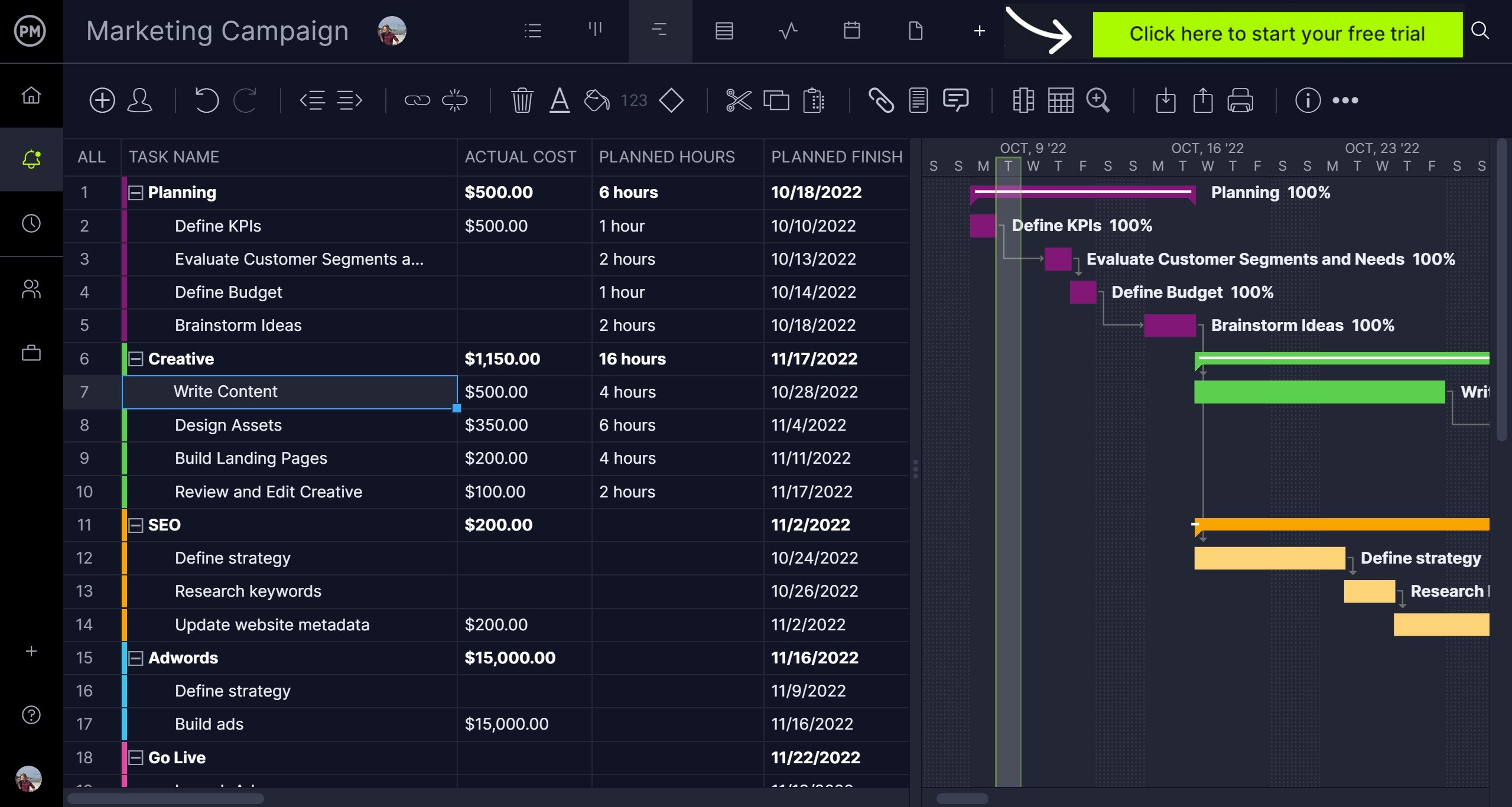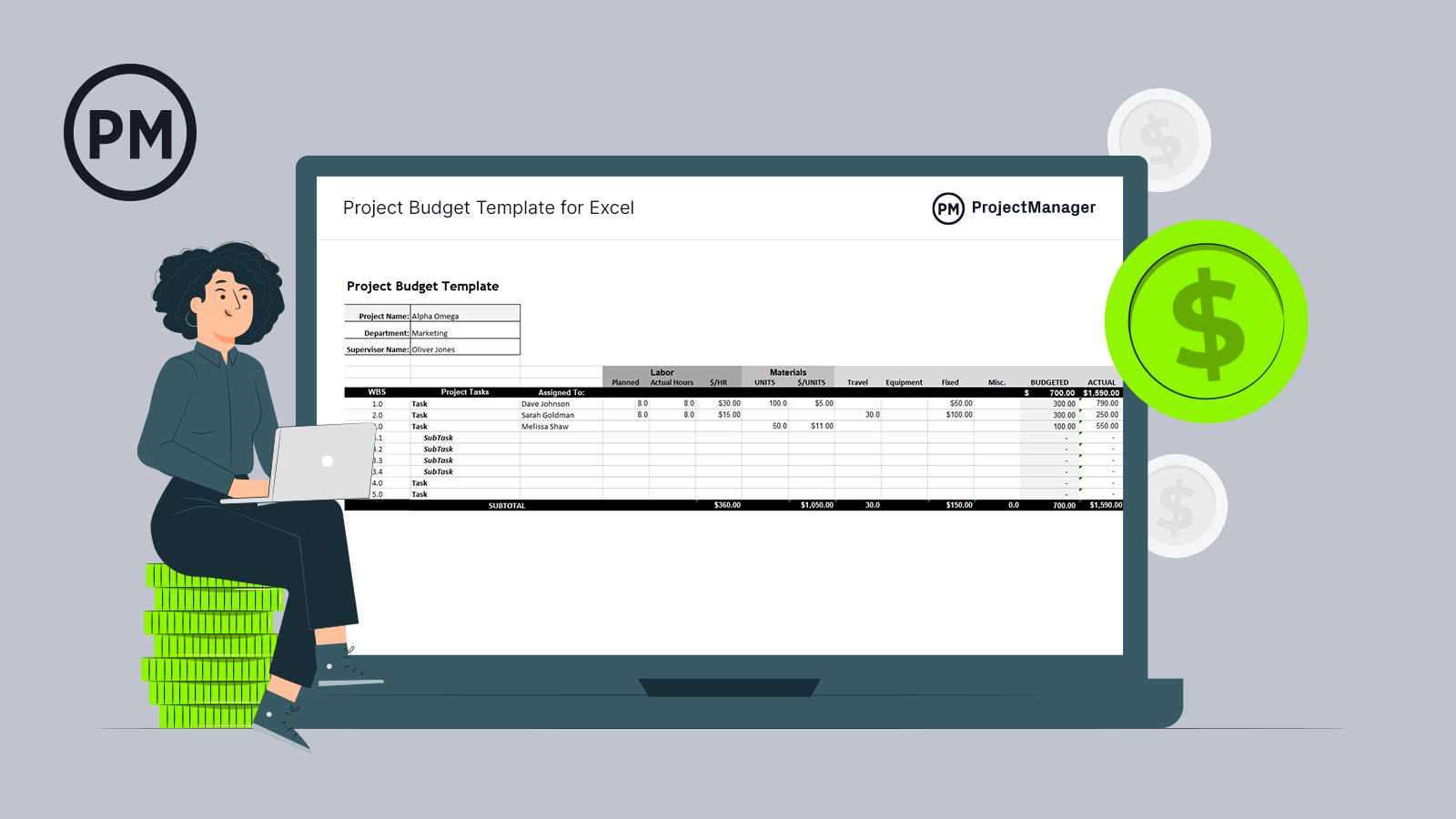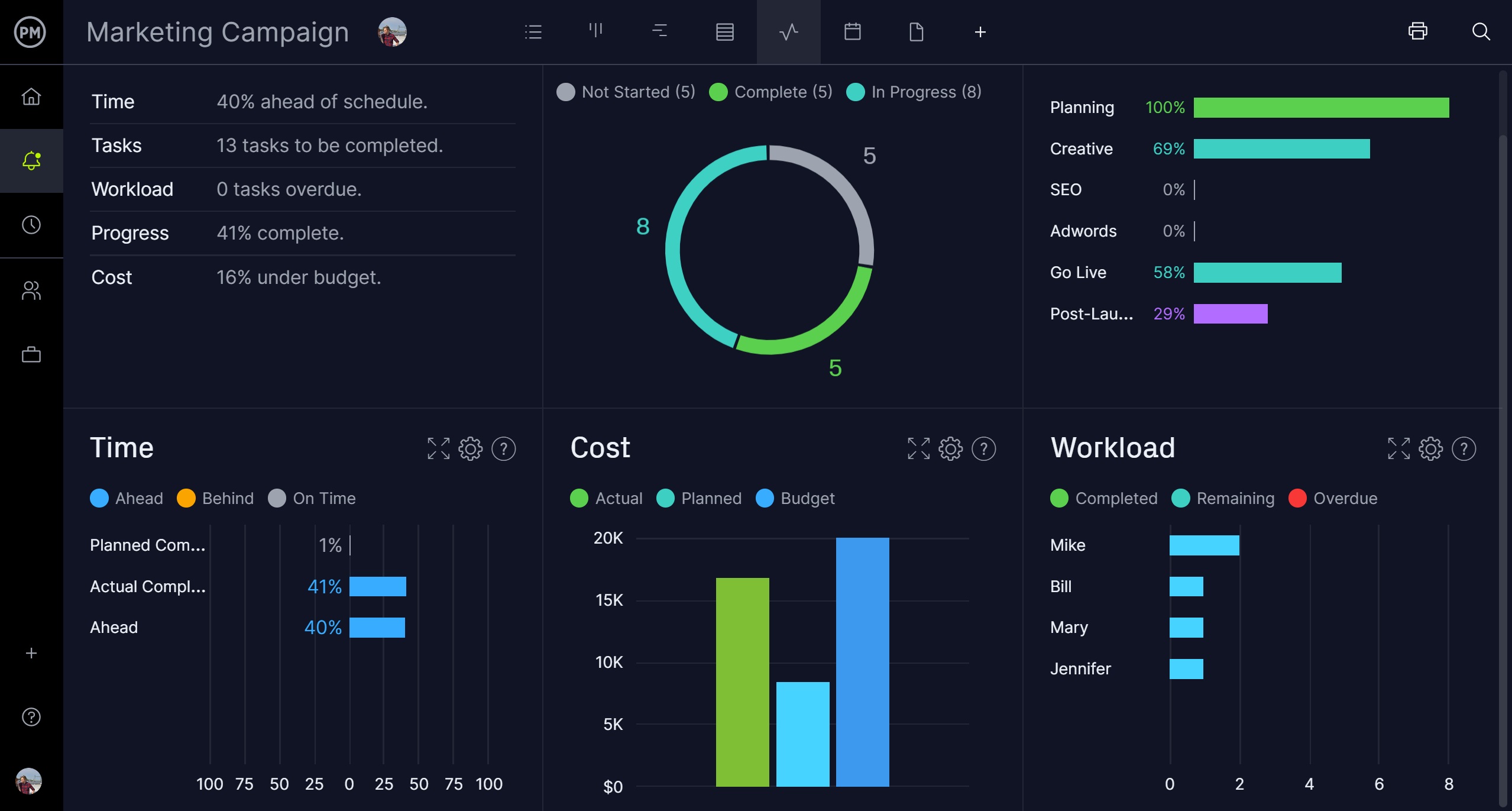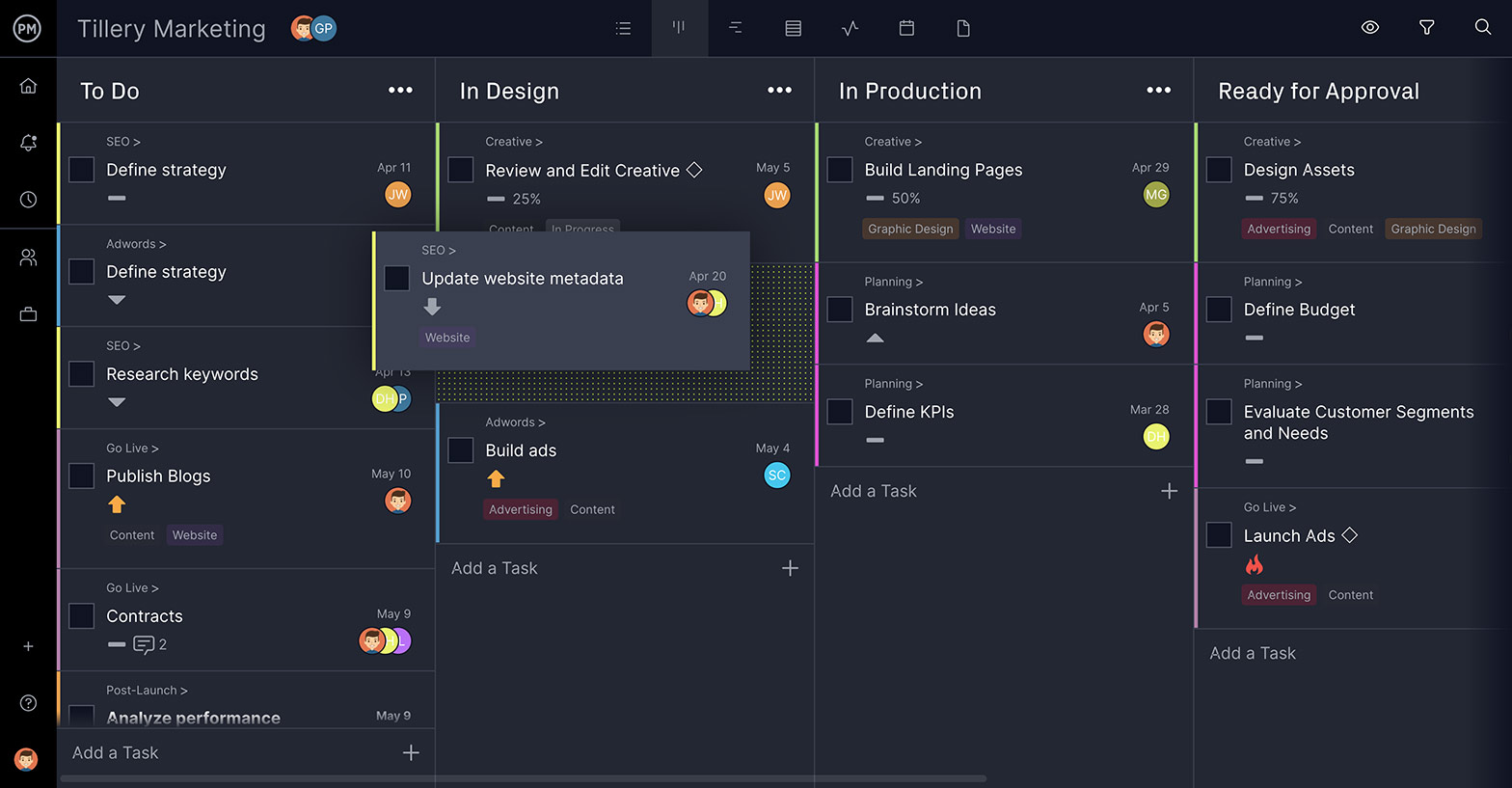If you’re working on a design project, wait. Before you start you need to have a design brief. It’s similar to a project brief, only focused on design. After all, you wouldn’t start driving if you didn’t first know your destination.
Projects can’t be idle and exploratory endeavors. Design projects are no different, which is why a design brief is so important. It communicates the design project and helps keep everyone working together regardless of their department.
What Is a Design Brief?
A design brief is a document that identifies the goals, scope and strategy of your design project. It’s similar to a roadmap to help with design decision-making and it defines the workflow of the design project, from start to finish.
It’s a critical first step for any design project in that it not only outlines the project but gets buy-in from the project team and key stakeholders. It communicates the project deliverables, budget and schedule to everyone involved, making sure they’re on the same page.
The design brief is also similar to the statement of work in a traditional project but the difference is that the client is already working with the design team. The deal is done, now only the details have to be sorted. Whatever you compare it to, the design brief stands alone as one of the first and most important documents in your design project.
The design brief is essential as it acts as the framework for your design plan. ProjectManager is project management software that helps you take a design brief and turn it into tasks, assignments and more. Use our interactive Gantt charts to organize your work, link dependencies that could delay your progress and share the plan with your team. You can even set a baseline to capture the schedule and monitor your planned progress against your actual progress in real time to stay on track. Get started with ProjectManager today for free.

Design Brief vs. Creative Brief
While often referred to as the same thing, a design brief and a creative brief are different animals. Knowing the difference is important when venturing into a design project.
The creative brief is a translation of the client’s objectives and goals including when and where it’s being executed, how it’ll flow through the supply chain and its practicalities.
Usually, the design brief is more concerned with the preproduction and business side of the project. The design brief lays out how things will be done while the creative brief is more about establishing the project objectives.
The design brief and the creative brief are different but work together. The research of the design brief informs the deeper creative brief, which targets the audience and makes sure the design is meeting their needs.
How to Write a Design Brief
Now that we know what a design brief is and how it differs from a creative brief, it’s time to learn how to write a design brief. There isn’t one way to create a design brief, but there are common elements to them all.
Before you begin, you’ll want to make sure the client’s objectives and goals are clear. It also helps to place a design brief in context to help inform the choices you make throughout the project. Once you have that in place, be sure to include the following.
Project Overview
The first step is to know your client and the company that has hired you for the design project. List all the details until you understand the market, industry and guidelines for the company’s brand. This will help you gain the trust of your stakeholders.
Some things to know include the size of the company you’re working with, contact info, naturally, take a look at their older projects and what their current design needs are. This will help as you work across departments to keep the objectives and goals at the forefront of every team’s mind.
Project Scope
The scope is an outline of everything that’s necessary to execute the project. The project scope is a very detailed part of your design brief, summarizing what you’ll do without leaving anything out. This is important not only for the client but so everyone on the design team understands their roles and responsibilities.
Once you have the project scope, be sure to get buy-in from the client and the project team. Everyone involved in the project needs to agree on the details outlined in this section or else there will be problems during the execution of the project. That is not good for anyone involved and will only cause delays and add costs.
Goals & Objectives
The goals and objectives must be clearly defined. If you’re unsure of these, the project is doomed to fail. Look at the design problems inherent in the project and explore ways to resolve them. List these steps so the team has a plan if they’re faced with a design problem.
You’ll also need to understand the purpose of the project as it will determine the goals and objectives. They go hand-in-glove. Once you have the goals identified, list the steps your team has to take in order to accomplish them. Be clear and specific. This isn’t an area in which you want to be vague as it will lead to misunderstandings resulting in delays and extra costs.
Project Deliverables
Deliverables are the outputs that are submitted within the scope of your project. Just as you outlined the scope, you’ll also want to detail the deliverables throughout the course of the project. Deliverables can be either tangible or intangible that the client will receive, including the end product.
Something to keep in mind as you list the project deliverables is what the end result looks like and the key milestones in the project. This can include the size, resolution and format that they will be. Also, make sure the deliverables align with the purpose of the project as defined earlier. If they’re not, there will be a problem with your client when they’re delivered. At that point, it’s too late and the schedule and budget will suffer.
Target Market or Audience
Just as important as the purpose, goals and objectives of a design project is who it’s for. That can be the market to which you’re introducing it or the audience you want to target as potential customers. Interview the client and create a design idea board to bounce things off of them and make sure you’re targeting the right market or audience. It will help you by always knowing who you’re working towards impressing.
Often the client has already done the heavy lifting in this arena. They have a target market or audience and can provide you with these details. That’s helpful, but you still want to make sure that you’re clear on who the market or audience is, such as the demographic data, psychological characteristics, etc. The better you know your audience, the more successful the project will be.
Project Budget
Of course, projects of all kinds can’t occur if they’re not funded. Being able to accurately forecast the cost of executing your design project is a critical step toward actualizing it. If your project estimates are off, you’re going to be spending more money and clients don’t like that.
Remember, your client isn’t likely a designer. They don’t know the cost related to creating what they want. There’s research, planning, executing and reviving involved. It’s your job not only to know how much the project will cost but convince the client that the price is reasonable. A word of advice: always add enough cushion to your budget to cover unexpected costs as these are commonplace.

Get your free
Project Budget Template
Use this free Project Budget Template for Excel to manage your projects better.
Project Timeline
The other fundamental aspect of any project is the timeline or how long it’ll take to complete the job. This is usually determined by a hard deadline from the client if they need to deliver to market during a specific time, season, etc. Having an accurate estimate of your schedule is as important as forecasting a realistic budget. You have to have ample time to do everything.
Again, you’ll probably have to educate your client on the timeline and why it’s as long as it is. They want quality and that doesn’t happen overnight, as any designer knows but few clients might understand. To have an accurate schedule, you need to know all the tasks and then make sure the resources are available. There are tools that can help, such as a work breakdown structure (WBS).
ProjectManager and Design Briefs
The design brief gets you ready for the project, but once you start executing your plan, you need project management software to connect and empower your teams. ProjectManager is online project management software that delivers real-time data that leads to better decision-making.
Use the Tools You Want
Design projects go through many departments and everyone has to work together. But not everyone works on the same tools. Managers love Gantt charts, agile designers gravitate to the visual workflow of kanban boards and copywriters might want to knock off their work on task boards. That’s why we offer multiple project views so everyone can work how they want to. Best of all, the real-time data is shared across the tool so everyone is always working on the most current information.

Track Progress and Performance in Real Time
Not only do you need to foster collaboration over cross-functional teams, but you also need to track their work in order to stay on schedule and keep to your budget. Get a high-level view with our real-time project dashboard. There’s no configuration needed and unlike other tools, it’s ready to use when you are. Simply toggle over to the live dashboard and see time spent on tasks, workload, costs and more in easy-to-read charts and graphs. For more details, there are customizable reports that can also be shared to keep your client updated.

Whether you work with a team in the same office, different departments or even across the globe, our real-time data makes it easy to stay connected and work better together. Teams can comment, share files and tag anyone on the project team if they need their input. You can even give clients access, limiting what they can see and do. Transparency leads to less confusion and greater productivity. Make your next design project a success with our software.
ProjectManager is award-winning software that helps you plan, manage and track design projects. Our collaborative platform and multiple project views give users the flexibility they need to work more effectively. Add risk, resource and task management features and you have a one-stop-shop for all your project needs. Get started with ProjectManager today for free.


